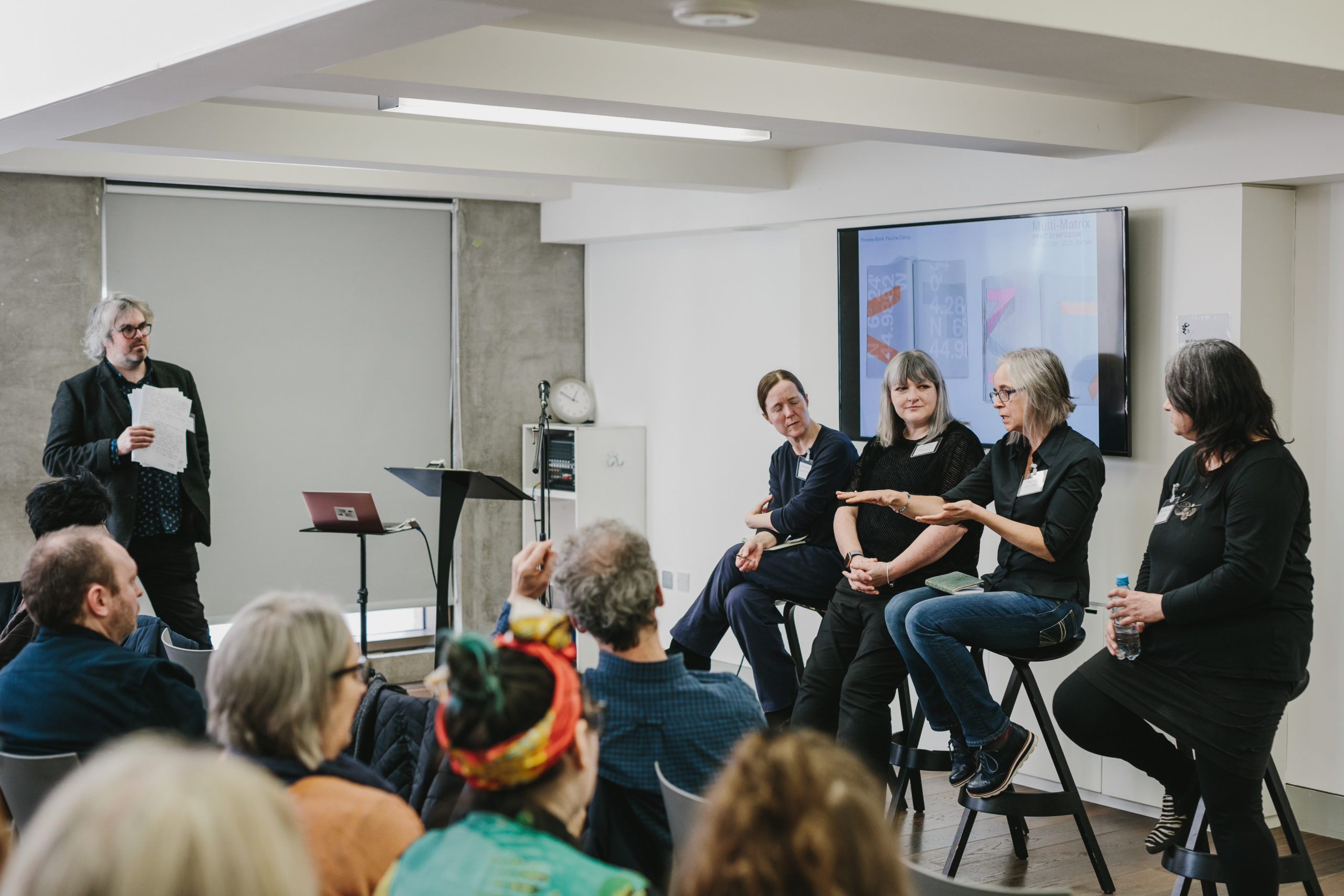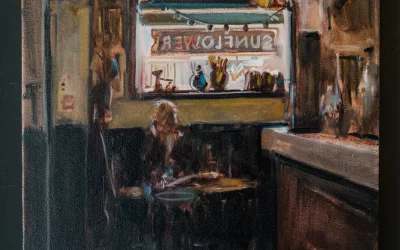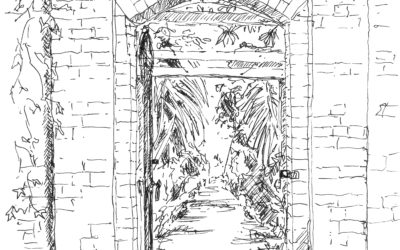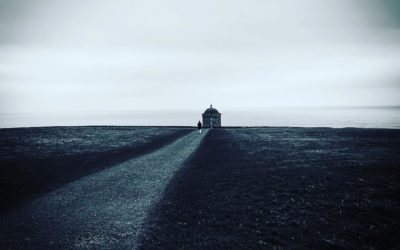In a past which now feels distant (but was in fact was only weeks ago) when the term ‘social distancing’ had only just been coined and the concept of having to self-isolate was inconceivable, there was a symposium organised in Belfast focusing on what seems the very opposite of self-isolation: being a multi-disciplinary artist.
Co-ordinated by the Belfast Print Workshop, in partnership with Seacourt Print Workshop and Ulster University, with funding from Belfast City Council, the focus was on print and featured speakers and panellists that exemplify contemporary multi-disciplinary printmaking.
Introduced by Meadhbh McIlgorm (artist and BPW Manager) and Suzanne Lyle (Arts Council of Northern Ireland) and chaired by artist Jonathan Brennan, this day-long symposium at the MAC Belfast seemed timely, if not overdue – the last printmaking event of this scale in Northern Ireland having been organised by Seacourt a decade ago. That symposium was concerned with the value and preservation of traditional techniques in an increasingly digital culture, whereas this one (entitled ‘Multi-Matrix’) equally sought to respond to contemporary concerns – the trend towards multidisciplinarity among printmakers, through both necessity and desire.
Artist-researcher Tracy Hill (Artlab, University of Central Lancashire) described how the physical location of her department within the university sees her mixing with designers, rather than fine art students, and the university having a multidisciplinary ethos in general. Her process is always informed by research and while printmaking is a significant element of her practice, she doesn’t call herself a printmaker, but rather allows each project to dictate the process used. One of her on-going projects involves the use of Faro scanners (devices used primarily by the construction industry) which, in the words of the manufacturers, ‘touch and sense place’ in 360 degrees. Hill manipulates the vast amounts of data gleaned from these scans to create wall drawings and large intaglio prints of up to three metres in size.
Artist Ann Donnelly (Northern Ireland Screen) and Seacourt Print Workshop Director Emma Drury spoke about the application of print processes in the wider field of health and well-being. They described their project in using film from the Digital Film Archive, in conjunction with printmaking, in workshops with dementia sufferers. Noting down statements triggered by film clips from the archive was useful for those with cognitive problems who tended to forget ideas between sessions. These text snippets were reproduced in letterpress rescued from a local newspaper office, and used as a way to ‘anchor’ participants and as springboards to create artworks.
Małgorzata Warlikowska’s (Academy of Fine Arts, Wrocław) work relates to the human condition in the modern world, including personal experiences and women’s rights. Employing a dizzying array of processes that ranges from screenprinting to ceramics, to screenprinting on ceramics, embroidery, welding, linocut and enamelling, her practice sees her working through series that can span several years and multiple iterations, playing with archetypes from art history (in one series seemingly updating the male torso while referencing antecedents like the Belvedere torso and Brancusi’s ‘Torso of a Young Man’) or popular culture e.g. Marilyn Monroe is a recurring motif, or with media clippings and slogans.
Andrew Folan’s (Head of Print, NCAD) printmaking practice explores the way print can extend in time, showing an evolution. One example of this is his Palimpsest Project in which students are invited to re-work old plates: ‘every time you work the plate, you print it before working it again [thereby] opening up the possibility of time-based printmaking’. In the early 2000s, Folan found an uncanny analogue in rapid-prototyping (an early application of 3D printing, in which material is deposited in successive layers to build three-dimensional forms) to the stacking of intaglio prints to form quasi-architectural forms he was engaged with at the time. Folan’s more recent work sees him modelling in virtual space with 3D modelling and animation software Blender. In his recent ‘Prometheus’ series, an animated virtual budding flower, which can pass through itself much like a Klein bottle, is paused at a certain key frames and printed. In this way, a digital animation finds a physical manifestation, returning to this notion of print extending in time.
A ‘Print Across Disciplines’ panel discussion with artists and lecturers Majella Clancy, Pauline Clancy and textile designer Ruth Crothers looked specifically at the theme of multi-disciplinary printmaking in Northern Ireland today with reflections on where things might go in the future.
Of all of the guest speakers, Sumi Perera’s range of disciplines seemed the widest apart, at least on a superficial level. In a former life she worked as a doctor in Sri Lanka before returning to the UK to do post-graduate studies in virology as well as an MA in Book Arts – at a time when the trend was towards minimalism and conceptualism. She generates multiple series by combining hybrid printmaking techniques including a range of intaglio techniques, lithography, screenprint, laser-cutting, engraving and sandblasting. She is ‘not precious about disciplines’ and raised a question about whether the term multi-disciplinary itself has lost its usefulness and perhaps the term post-disciplinary is now more appropriate.
As well as thematic echoes between all of the speakers, certain recurring themes emerged throughout the day: a general perception of a return to traditional practices and the hand-created mark alongside the adoption of digital techniques. There was also a consensus that to be multi-disciplinary, one needs to have a discipline to bring to the table to begin with, and a question as to whether all of this really is new, or does it have its roots in movements like the Bauhaus.
The day closed with a showcase of works from BPW and Seacourt members alongside pieces from Belfast School of Art and symposium guests and a chance for discussions to continue, in accordance with the latest social-distancing norms.
Jonathan Brennan is a multi-disciplinary artist based in Belfast.
Image © Neal Campbell




